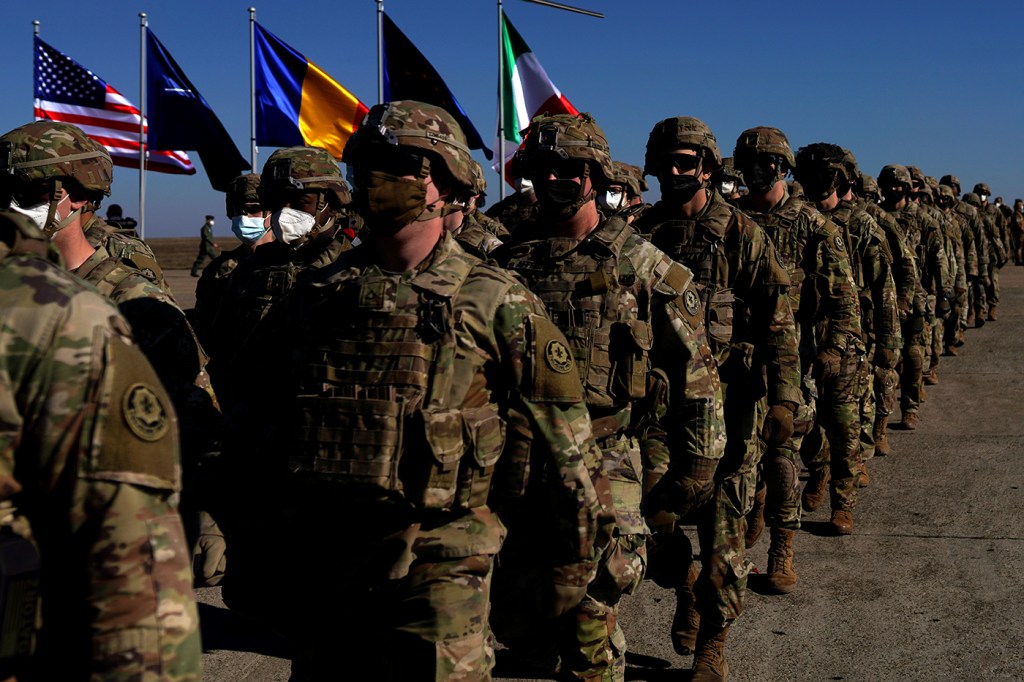What is NATO’s Response Force, and why is it being activated?

This report is part of ongoing coverage of the Russia-Ukraine war. Visit our dedicated page for more on this topic.
The leader of the North Atlantic Treaty Organization announced on Friday the deployment of the alliance’s Response Force in the wake of Russia’s intervention into Ukraine. What is this high-readiness force all about, and what do they hope to achieve?
“We have to take this seriously, and that’s exactly why we are now deploying the NATO Response Force for the first time in a collective defense context,” Secretary-General Jens Stoltenberg told reporters.
The rapid-reaction, multinational, crisis-response and defense force falls under the command of the Supreme Allied Commander in Europe and is designed to be ready for rapid deployment in the midst of a crisis, says Mai’a Cross, the Edward W. Brooke Professor of Political Science and International Affairs at Northeastern.

Left to right: Mai’a Cross, professor of political science and international affairs. Julie Garey, assistant teaching professor of political science who specializes in international relations. Photos by Adam Glanzman and Alyssa Stone/Northeastern University
The 40,000-strong force is capable of addressing a range of situations from natural disasters to protecting territorial integrity. NATO members each contribute their troops on a rotational basis. Stoltenberg did not say how many personnel would be activated, only that “we are deploying elements” of the force.
“The meaning of the existence of the NRF is to tangibly show that NATO allies are willing to act together in the name of collective defense and deterrence,” Cross says.
Activation of the response troops does not mean that any U.S. or NATO troops will go into Ukraine, which is not a member. “The intention is to create a red line at the border between Ukraine and NATO member states, not send troops into Ukraine itself,” Cross explains.
And, it enables NATO allies to move resources and assets as necessary, adds Julie Garey, an assistant teaching professor of political science who specializes in international relations. But it shouldn’t be read as an aggressive move, she says. “NATO has said that it’s only going to act as a defensive alliance, and I think we’ll continue to see that play out.”
The strategy is to deter Russian President Vladimir Putin and to avoid a spillover of conflict beyond Ukraine. At this point, the Response Force is activated and on standby, not yet deployed, says Cross. “Beyond the NRF, thousands of troops from EU member states, the U.S., and Canada are positioning themselves further East to prevent and deter conflict,” she says.
However, as Stoltenberg points out, “there are no NATO troops at all inside Ukraine. We don’t have any plans to put NATO troops in Ukraine.”
The specific benefit of the Response Force is that it is a flexible and highly-prepared force that can respond quickly to a range of scenarios.
Activation comes as Moscow warned Finland and Sweden against joining NATO, a move that would have “serious military-political repercussions,” says a spokeswoman for Russia’s Foreign Ministry.
Might NATO forces have been alerted because of the threats?
Western countries had begun re-positioning their troops and military equipment before Moscow threatened Sweden and Finland. Even if not in NATO, both Sweden and Finland are in the EU, and the EU has a similar mutual-defense clause, Cross says. So if one EU country is attacked, the others will come to its aid using any means in their power.
“Putin’s threats are just more of the same,” she says. “An effort to dictate the terms of European security in defiance of longstanding norms of sovereignty and self-determination.”
At this point, however, Western countries are preparing a range of tools to deter and defend against Russian aggression, and to prevent a direct confrontation with NATO countries.
“The NRF is part of this and deploying these troops to Europe shows the solidarity and resolve of NATO countries,” says Cross.
For media inquiries, please contact media@northeastern.edu.





